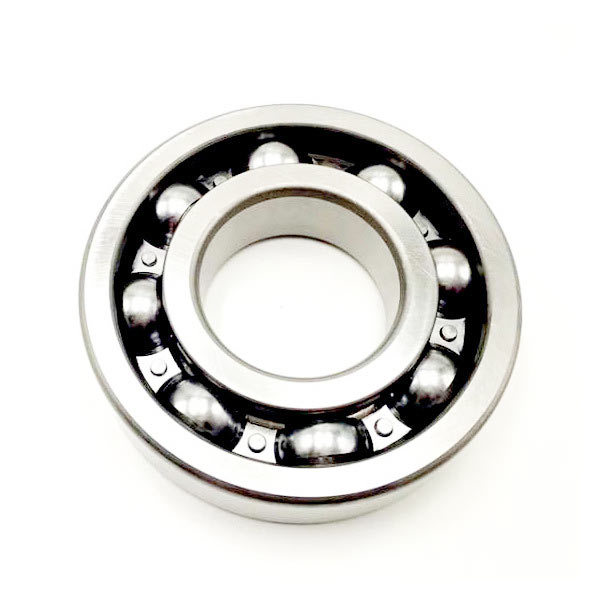15
2025
-
07
Maximizing Equipment Lifespan with Spherical Roller Bearings: A Comprehensive Guide
Maximizing Equipment Lifespan with Spherical Roller Bearings Table of Contents 1. Introduction to Spherical Roller Bearings 2. What Are Spherical Roller Bearings? 3. Benefits of Using Spherical Roller Bearings 4. Applications of Spherical Roller Bearings in Industry 5. Maintaining Spherical Roller Bearings for Longevity 6. Choosing the Right Spherical Roller Bearings for Y
Maximizing Equipment Lifespan with Spherical Roller Bearings
Table of Contents
- 1. Introduction to Spherical Roller Bearings
- 2. What Are Spherical Roller Bearings?
- 3. Benefits of Using Spherical Roller Bearings
- 4. Applications of Spherical Roller Bearings in Industry
- 5. Maintaining Spherical Roller Bearings for Longevity
- 6. Choosing the Right Spherical Roller Bearings for Your Equipment
- 7. Common FAQs about Spherical Roller Bearings
- 8. Conclusion
1. Introduction to Spherical Roller Bearings
Spherical roller bearings are renowned for their ability to accommodate misalignment and provide robust support in various industrial applications. These bearings can significantly enhance the performance and lifespan of equipment, making them essential components in machinery ranging from mining equipment to manufacturing processes. In this guide, we will delve into the characteristics, advantages, and maintenance practices associated with spherical roller bearings, equipping you with the knowledge to maximize the lifespan of your industrial equipment.
2. What Are Spherical Roller Bearings?
Spherical roller bearings are a type of rolling-element bearing that has two rows of symmetrical spherical rollers. This design allows the bearing to handle both radial and axial loads, making it exceptionally versatile. The spherical shape of the rollers enables them to self-align, which is particularly beneficial in applications where shaft misalignment may occur.
2.1 Key Components of Spherical Roller Bearings
The main components of spherical roller bearings include the inner ring, outer ring, rolling elements (spherical rollers), and cage. The inner and outer rings are typically made of high-quality steel to withstand heavy loads and resist wear. The cage, often constructed from metal or polymer, holds the rollers in place and ensures they move freely.
2.2 Types of Spherical Roller Bearings
There are various types of spherical roller bearings, including:
- **Double Row Spherical Roller Bearings**: Designed to accommodate higher loads, these bearings have two rows of rollers.
- **Spherical Roller Thrust Bearings**: These bearings are specifically designed to support axial loads in addition to radial loads.
- **Self-Aligning Roller Bearings**: These bearings automatically adjust to misalignment, reducing the risk of premature failure.
3. Benefits of Using Spherical Roller Bearings
Spherical roller bearings offer several significant advantages that contribute to their popularity in various industries:
3.1 Enhanced Load Capacity
Due to their design, spherical roller bearings can support heavy radial and axial loads effectively. This makes them ideal for applications with demanding weight requirements.
3.2 Self-Alignment Capability
The self-aligning feature of spherical roller bearings allows them to function efficiently even in the presence of misalignment. This capability reduces maintenance needs and prolongs the lifespan of both the bearing and the machinery it supports.
3.3 High Durability
Constructed from high-quality materials, spherical roller bearings exhibit exceptional wear resistance, making them suitable for harsh operating environments. Their durability translates to less frequent replacements, resulting in cost savings.
3.4 Versatility Across Applications
These bearings can be utilized in various industrial sectors, from automotive to construction, due to their ability to handle different load conditions. This versatility makes them a preferred choice for engineers.
4. Applications of Spherical Roller Bearings in Industry
Spherical roller bearings find applications in numerous industries, including:
4.1 Mining and Heavy Machinery
In the mining sector, spherical roller bearings are used in equipment such as crushers, conveyors, and haul trucks. Their robust design enables them to handle the heavy loads and extreme conditions typical of mining operations.
4.2 Automotive Industry
In the automotive industry, these bearings are often found in wheel hubs and suspension systems. They facilitate smooth movement and contribute to vehicle stability and safety.
4.3 Manufacturing Equipment
Spherical roller bearings are integral to various manufacturing processes, including CNC machines, lathes, and milling machines. They ensure precision and reliability in production.
4.4 Wind Turbines
In renewable energy, spherical roller bearings are essential components of wind turbine gearboxes, allowing them to operate efficiently under varying loads and conditions.
5. Maintaining Spherical Roller Bearings for Longevity
Proper maintenance is crucial to maximizing the lifespan of spherical roller bearings. Here are some best practices:
5.1 Regular Inspections
Conducting regular inspections helps identify wear and tear before they escalate into major issues. Look for signs of corrosion, vibration, or abnormal noise.
5.2 Adequate Lubrication
Lubrication is vital for reducing friction and wear. Ensure that the bearings are adequately lubricated with the appropriate type and amount of lubricant, following the manufacturer's recommendations.
5.3 Monitoring Operating Conditions
Keep an eye on the operating temperature and load conditions. Excessive heat or load can accelerate wear and lead to premature bearing failure.
5.4 Replacement of Worn Parts
If parts of the bearing are showing significant wear, replace them promptly to avoid further damage to the machinery.
6. Choosing the Right Spherical Roller Bearings for Your Equipment
Selecting the appropriate spherical roller bearings for your application is critical to achieving optimal performance. Consider the following factors:
6.1 Load Requirements
Determine the load capacity required for your application. Spherical roller bearings come in various sizes and ratings, so it’s essential to choose one that matches your load demands.
6.2 Operating Environment
Consider the environmental conditions in which the bearings will operate. Factors such as temperature, humidity, and exposure to contaminants can influence your choice.
6.3 Speed and Performance
Evaluate the operating speed of your machinery. Some spherical roller bearings are designed for high-speed applications, while others are better suited for heavy-duty, slow-moving equipment.
6.4 Compatibility with Existing Components
Ensure that the selected bearings are compatible with existing machinery components to avoid installation issues.
7. Common FAQs about Spherical Roller Bearings
7.1 What is the difference between spherical roller bearings and deep groove ball bearings?
Spherical roller bearings can accommodate misalignment and handle both radial and axial loads, while deep groove ball bearings primarily support radial loads and may not perform as well under misalignment conditions.
7.2 How often should spherical roller bearings be lubricated?
Lubrication frequency depends on operating conditions. However, a general rule is to check and replenish lubrication every 3 to 6 months or as per the manufacturer's recommendations.
7.3 Can spherical roller bearings be used in high-temperature applications?
Yes, certain spherical roller bearings are designed to withstand high temperatures. Choose bearings with materials suitable for elevated temperatures if your application requires them.
7.4 What maintenance practices can extend the life of spherical roller bearings?
Regular inspections, proper lubrication, monitoring of operating conditions, and timely replacements of worn components are essential maintenance practices that can extend the lifespan of spherical roller bearings.
7.5 How do I know if my spherical roller bearings are failing?
Signs of bearing failure may include unusual noises, increased vibration, overheating, or visible wear on the bearing surfaces. Regular monitoring can help catch these issues early.
8. Conclusion
In conclusion, **spherical roller bearings** play a pivotal role in maximizing the lifespan and efficiency of industrial equipment. Their ability to handle heavy loads and misalignment makes them indispensable in various applications. By understanding their benefits, proper maintenance practices, and selection criteria, organizations can significantly enhance their operational efficiency and reduce costs related to equipment failure. Investing in quality spherical roller bearings and adhering to best practices will ensure the longevity and reliability of your machinery, ultimately contributing to your business’s overall success.
10% DISCOUNT FOR NEW CUSTOMERS

WhatsApp:+8613211157555
Tel: +8613211157555
Address:Room 1106, 11th Floor, No. 23, Fengshan West Road, Jinbang Community, Daliang Street, Shunde District, Foshan City, Guangdong Province
Copyright 2025 Schaeffler (Guangdong) Transmission Technology Co., Ltd. SEO Business license




